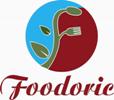 |
Foodoric and associated companies are chemicals manufacturing companies operated in India USA UAE Europe Asia and other countries around the world. The associates have one or more of certifications like ISO-9001, ISO-14001, ISO-22000:2005, FSSC 22000; OHSAS 18001; Kosher and Halal Certified; HACCP, FSSAI and FDA - GMP approval. Buyers are assured of good quality and CIF wholesale and retail price for supplies of our Povidone. |
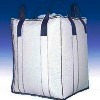
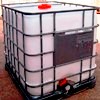
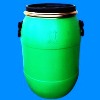
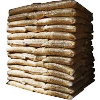
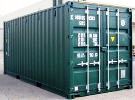


Povidone or Polyvinylpyrrolidone BP USP FCC Food Grade Manufacturers Suppliers
Povidone
Polyvinylpyrrolidone BP USP FCC Food Grade

Povidone or Polyvinylpyrrolidone CAS Number 9003-39-8, Molecular Formula: (C6H9NO)n, Molecular Weight: Varies
Polyvinylpyrrolidone FCC food Grade Specifications
PVP; Povidone; Poly[1-(2-oxo-1-pyrrolidinyl)ethylene]
(C6H9NO)x
Lower mol wt range product ~40,000
Higher mol wt range product ~360,000
INS: 1201 CAS: [9003-39-8]
DESCRIPTION
Polyvinylpyrrolidone occurs as a white to tan powder. It is a polymer of purified 1-vinyl-2-pyrrolidone produced catalytically. It is soluble in water, in alcohol, and in chloroform, and is insoluble in ether. The pH of a 1:20 aqueous solution is between 3 and 7.
Function: Clarifying agent; separation/filtration aid; stabilizer; bodying agent; tableting aid; dispersant; coating on fresh fruit.
REQUIREMENTS
Identification:
A. Add 20 mL of 1 N hydrochloric acid and 5 mL of potassium dichromate TS to 10 mL of a 1:50 aqueous solution. An orange-yellow precipitate forms.
B. Add 5 mL of a 1:50 aqueous solution to 75 mg of cobalt nitrate and 300 mg of ammonium thiocyanate dissolved in 2 mL of water, mix, and then make the resulting solution acid with 2.7 N hydrochloric acid. A pale blue precipitate forms.
C. Add a few drops of iodine TS to 5 mL of a 1:200 aqueous solution. A deep red color appears.
Assay: Not less than 11.5% and not more than 12.8% as nitrogen (N), calculated on the anhydrous basis.
Aldehydes: (as acetaldehyde) Not more than 0.05%.
Hydrazine: Not more than 1 mg/kg.
K-Value: Between 27 and 32 for the lower-molecularweight-range product, and between 81 and 97 for the highermolecular-weight-range product.
Lead: Not more than 2 mg/kg.
Residue on Ignition: Not more than 0.1%.
Unsaturation: (as vinylpyrrolidone) Not more than 0.1%.
Water: Not more than 5.0%.
Povidone USP Grade
(C6H9NO)*x
2-Pyrrolidinone, 1-ethenyl-, homopolymer.
1-Vinyl-2-pyrrolidinone polymer [9003-39-8].
Povidone is a synthetic polymer consisting essentially of linear 1-vinyl-2-pyrrolidinone groups, the degree of polymerization of which results in polymers of various molecular weights. The different types of Povidone are characterized by their viscosity in aqueous solution, relative to that of water, expressed as a Kvalue. The K-value of Povidone having a stated (nominal) K-value of 15 or less is not less than 85.0 percent and not more than 115.0 percent of the stated values. The K-value of Povidone having a stated K-value or a stated K-value range with an average of more than 15 is not less than 90.0 percent and not more than 108.0 percent of the stated value or of the average of the stated range.
Labeling: Label it to state, as part of the official title, the K-value or K-value range of the Povidone.
Identification:
A: To 10 mL of a solution (1 in 50) add 20 mL of 1 N hydrochloric acid and 5 mL of potassium dichromate an orange-yellow precipitate is formed.
B: Dissolve 75 mg of cobalt nitrate and 300 mg of ammonium thiocyanate in 2 mL of water. To this solution add 5 mL of a solution of Povidone (1 in 50), and render the resulting solution acid by the addition of 3 N hydrochloric acid: a pale blue precipitate is formed.
C: To 5 mL of a solution (1 in 200) add a few drops of iodine: a deep red color is produced.
pH: between 3.0 and 7.0, in a solution (1 in 20).
Water: not more than 5.0%.
Residue on ignition: not more than 0.1%.
Lead: Dissolve 1.0 g in 25 mL of water: the limit is 10 ppm.
Limit of aldehydes: not more than 0.05% is found.
Limit of hydrazine: To pass the test.
Vinylpyrrolidinone: To pass the test.
K-value: To pass the test.
Nitrogen content: The nitrogen content, on the anhydrous basis, is not less than 11.5% and not more than 12.8%.
Povidone BP Grade
Ph Eur
C6nH9n+2NnOn --- 9003-39-8
DEFINITION
a-Hydro-w-hydropoly[1-(2-oxopyrrolidin-1-yl)ethylene]. It consists of linear polymers of 1-ethenylpyrrolidin-2-one.
Content: 11.5 per cent to 12.8 per cent of nitrogen (N; Ar 14.01) (anhydrous substance). The different types of povidone are characterised by their viscosity in solution expressed as a K-value.
CHARACTERS
Appearance: White or yellowish-white, hygroscopic powder or flakes.
Solubility: Freely soluble in water, in ethanol (96 per cent) and in methanol, very slightly soluble in acetone.
IDENTIFICATION
First identificationıA, E.
Second identificationıB, C, D, E.
A. Infrared absorption spectrophotometry
B. To 0.4 ml of solution S1 (see Tests) add 10 ml of water, 5 ml of dilute hydrochloric acid and 2 ml of potassium dichromate solution. An orange-yellow precipitate is formed.
C. To 1 ml of solution S1 add 0.2 ml of dimethylaminobenzaldehyde solution and 0.1 ml of sulphuric acid. A pink colour is produced.
D. To 0.1 ml of solution S1 add 5 ml of water and 0.2 ml of 0.05 M iodine. A red colour is produced.
E. To 0.5 g add 10 ml of water and shake. The substance dissolves.
TESTS
Solution S: Dissolve 1.0 g in carbon dioxide-free water and dilute to 20 ml with the same solvent. Add the substance to be examined to the water in small portions, stirring using a magnetic stirrer.
Solution S1: Dissolve 2.5 g in carbon dioxide-free water and dilute to 25 ml with the same solvent. Add the substance to be examined to the water in small portions, stirring using a magnetic stirrer.
Appearance of solution: Solution S is clear and not more intensely coloured than reference solution.
pH: 3.0 to 5.0 for solution S, for povidone having a stated K-value of not more than 30; 4.0 to 7.0 for solution S, for povidone having a stated K-value of more than 30.
Viscosity, expressed as K-value: To pass the test.
The K-value of povidone having a stated K-value of 15 or less is 85.0 per cent to 115.0 per cent of the stated value. The K-value of povidone having a stated K-value or a stated K-value range with an average of more than 15 is 90.0 per cent to 108.0 per cent of the stated value or of the average of the stated range.
Aldehydes: Maximum 5.0×100 ppm, expressed as acetaldehyde.
Peroxides: Maximum 400 ppm, expressed as H2O2.
Formic acid: To pass the liquid chromatography test.
Hydrazine: To pass the test.
Impurity A. R = CH=CH2: 1-ethenylpyrrolidin-2-one (1-vinylpyrrolidin-2-one): To pass the test.
Impurity B. R = H: pyrrolidin-2-one (2-pyrrolidone): To pass the test.
Heavy metals: Maximum 10 ppm.
Water: Maximum 5.0 per cent, determined on 0.500 g.
Sulphated ash: Maximum 0.1 per cent, determined on 1.0 g.

Povidone or Polyvinylpyrrolidone Manufacturers Suppliers:
Foodoric Group of Cos
India, USA, UAE, Europe
e-mail: info@foodoric.com

Copyright
Last
14 March, 2022
Povidone or Polyvinylpyrrolidone Suppliers, Exporters, Importers, Manufacturers offering good CIF wholesale and retail prices, quality and online information.
A jackal woke up early in the morning and went in to the plains. He looked at his long shadow in the rising morning sun and said to himself, "I must have a camel for my meal today".
He kept moving around till noon and it was getting hot and the jackal was tired. He was also hungry and thirsty. He looked at his small shadow in the mid-day sun. He murmered, "I was only joking about the camel, a mouse will do".